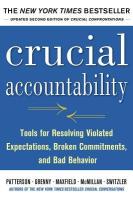This summer’s reading was a balance of school-related and personal books.
Deep Work: Rules for Focused Success in a Distracted World by Cal Newport

Cal Newport’s writing were recommended to me by a friend. After reading some of his blog posts, this seemed like a good book with which to start. It was a quick read and mostly reinforced my understanding of the importance of “deep work”. Last year, when we had block scheduling during, and I was isolated during these blocks, I found that I got a ton of stuff done. While it will be more challenging this school year, I’m hoping to continue to find the time and environment at school to achieve this deep work. I haven’t yet, but I have some ideas!
Crucial Conversations: Tools for Talking When Stakes Are High by Kerry Patterson, Joseph Grenny, Ron McMillan, Al Switzler, Stephen R. Covey

One of the mentors has shared tips from Crucial Conversations over the past couple of years and highly recommended that I read this book. It is excellent and my favorite book from this summer. While I read it in the context of my role as a mentor and head coach of our FIRST Robotics team, it is applicable to every aspect of my life. I took extensive notes, which I expect that I will review frequently to prepare for the various crucial conversations that I will have.
The Rise and Fall of D.O.D.O. by Neal Stephenson and Nicole Galland

I rode the Southwest Chief from Naperville, Illinois to Raton, New Mexico this summer on my way to the Philmont Scout Ranch with my son and our troop. I have ridden this train twice before to New Mexico and, each time, read a Stephenson novel. So, it seemed fitting to choose another for this trip. Compared to his other novels, this was a lighter and easier read, which made it great for the train. I planned to read half of it on the way to New Mexico and the remainder on the return trip, but I found myself unable to stop and finish the book before reaching Philmont.
Crucial Accountability: Tools for Resolving Violated Expectations, Broken Commitments, and Bad Behavior
by Kerry Patterson, Joseph Grenny, Ron McMillan, Al Switzler

Since I found Crucial Conversation so incredibly helpful, I decided to read the “sequel” Crucial Accountability as well. It was, by design, a bit repetitive after having just read Crucial Conversations. It was still very useful. And, like with Crucial Conversations, I took many notes and will refer to them frequently. While I again expect to apply these ideas the most on the robotics team, I plan to share some of the key ideas in this book with my Software Engineering students to help them have the skills needed to hold each other accountable on their project teams. I think that a series of workshops and learning, for administrators and teachers, focused on crucial conversations and accountability would have the greatest potential to dramatically transform our school district.
Fall or, Dodge in Hell by Neal Stephenson

On long road trips, I like to check out a Stephenson novel on CD from the library and play it in the car. We took an abbreviated road trip this summer; so, we didn’t quite finish the novel in the car, much to the disappointment of my son. I’m currently reading the rest of the book. This is kind of a sequel to REAMDE in that there are many shared characters but having read the previous novel isn’t critical before reading this one. Like so many of Stephenson’s novels, the science fiction that he presents frighteningly mirrors current events. As a result I found this book, especially the first part, concurrently fascinating and terrifying. I do love that Enoch Root has made yet another appearance!
